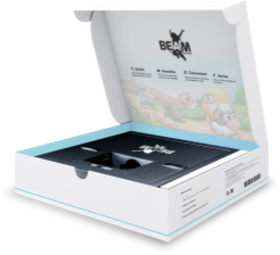Yair Ariel • April-4-2016
When it comes to design, decoration and amenities, health care clinics have come a long way from the sterile and industrial look of a few decades ago. Today, patients are frequently greeted with calming mood music, comfortable furniture, flattering lighting and bottled water or coffee. It’s all part of an effort to make the visit as relaxing and painless as possible — improving the patient experience, that is something that can lead to better outcomes, while helping cultivate long-term provider/patient relationships.

Improving the patient experience
While this kind of thoughtful design and planning is quite helpful when treating adults, it’s absolutely invaluable when it comes to children. The right office modifications can turn a healthcare setting from foreboding and anxiety-inducing to something that puts a child at ease — and may even generate the same level of excitement as a playground.
With that in mind, let’s review some smart steps healthcare clinic operators can take to improve their patient experience for children.
Create the right environment
When aiming to create a child-friendly medical environment, the best case scenario is designing a clinic that doesn’t really look or feel like a clinic. That means creating a home-like landscape that minimizes institutional elements, can have a huge boost to the patient experience. The National Institute of Building Sciences recommends using elements such as natural lighting, child-sized furniture and all-natural finishes and textures to accomplish this.
It’s also important to bear in mind that children are smaller, so windows, water fountains and other objects should be at a scale that doesn’t overwhelm them. Along with toys, books, electronics and whimsical design elements, it’s often a smart idea to install a large showpiece item. Objects such as an aquarium, a healing garden or a large train set keep children so busy they don’t have time to worry about their impending health care appointment. Another idea: using new, cutting-edge projection technology to turn part of the clinic into an immersive play space.
Invest in toys, furniture and equipment that can be easily cleaned
While some parents cringe at the thought of their children sharing communal toys in a clinic setting, fears of acquiring a germ-related illness are often overblown. Following a smart hand washing and personal hygiene protocol can mitigate any risk involved with sharing toys. It’s advisable to offer lots of non-porous toys that can be easily wiped down and disinfected on a daily basis. The same thing applies to furniture. Fun and clean toys will boost the patient experience for both parents and their children.
Focus on enrichment, not just entertainment
It’s not enough to merely stock an office with toys and other diversions. Ideally, healthcare centers should be full of objects that provide both engagement and enrichment for children to improve the patient experience. Puzzles and games that help develop motor skills are excellent choices. It’s well established that slightly older kids are crazy about their smartphones, apps and digital devices. Clinics may wish to offer an interactive game that will engage children according to these preferences — something that will stimulate their native curiosity and override their fear of the unknown. Interactive games — particularly those which can be played in a group setting –encourage children to look forward to medical appointments, rather than dread their arrival.
Incorporate bright colors and whimsy into office attire
While there is certainly nothing wrong with wearing a white coat, when looking to improve the patient experience, it’s not always the most approachable look for medical personnel where children are concerned. The coat may lead kids to recall frightening prior experiences at hospitals. Instead, employ bright colors, animal prints, eye-catching ties and other apparel that helps put children more at ease. This extends to the aesthetic of the office as well. It’s often wise to have a section of a waiting area decorated specifically for children five and under, where animal patterns and cartoon characters can be prominently displayed. A second, more private section for older children, featuring digital screens, computers and other amenities, can also be established.
Offer a reward at the end of a visit
It often doesn’t take much to keep a child happy — even if they’re dealing with the stress of a medical or dental visit. Maintaining a supply of relatively healthy snacks (something like shortbread cookies) and stickers to hand out when young patients prepare to leave is a great way to end a visit on a positive note. It also gives anxious children something to look forward to while the visit is underway.
The takeaway
Most children will never relish a visit to their doctor or dentist. Yet by following the ideas outlined above, clinic operators can create friendly, accommodating spaces that feel more like home while reducing anxiety and apprehension and creating a positive patient experience.
About BEAM
BEAM interactive projector game system, a technology developed by EyeClick, is an award-winning gaming solution with the ability to transform any space into a highly-immersive and engaging play area for children. BEAM uses cutting-edge projection technology that mounts to a ceiling, creating an interactive play space on any surface below. You can find BEAM in use at healthcare, pediatric and dental clinics and many other environments across the globe.
For more information about how BEAM increases customer loyalty and engagement, please visit joinbeam.com.







